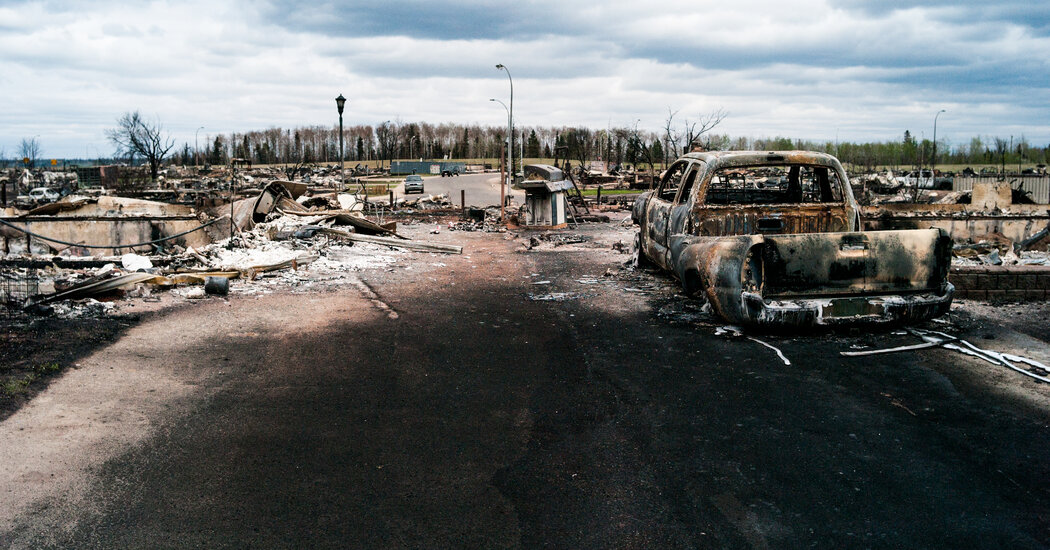While I had covered many wildfires by 2016, I didn’t realize the full extent of their destructive energy until I stepped off a bus carrying journalists on the first official tour of Fort McMurray, during the tail end of a fire that had forced the panicked evacuation of the city.
,
In front of me was the slumped, incinerated remains of a pickup truck that presumably had once been someone’s pride. Behind it, silvery lines trickled down the blackened driveway of a now obliterated house. They were the remains of aluminum parts inside the truck that had liquefied in the wildfire’s scorching heat.
This week, similar horrors came to another Alberta community. After ravaging a large portion of Jasper National Park, two wildfires reached the town of Jasper, a resort community in one of Canada’s most scenic mountain settings.
,
[Read: Wildfire Roars Through a Canadian Town Popular with Tourists]
[Read: A Canadian Wildfire Grew So Intense It Made Its Own Weather]
As of Friday evening, no obvious end to the fire in Jasper was in sight, although cooler, wetter weather had slowed its spread. At that point, 358 of Jasper’s 1,113 buildings had fallen to flames.





